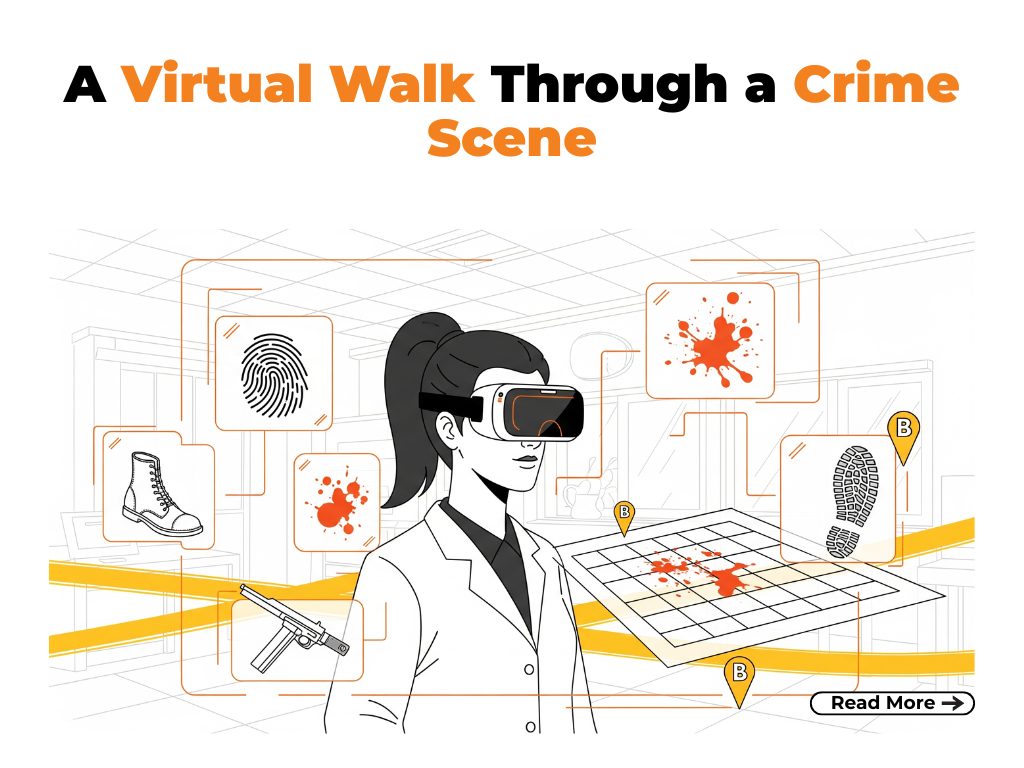In today’s world, where science meets law, the role of forensic science in criminal justice has become increasingly crucial, turning crime-solving into a highly specialised and evidence-based process. Ever wondered how a crime mystery is solved? Imagine stepping into the shoes of an investigating officer, no storyline, no witness, just a crime scene with a baggage of questions. Unlike movies and crime series, real danger and pressure to get to the culprit, before it’s too late. If you think it can be solved alone by the investigating office, you are mistaken!
In the criminal justice system, forensic science is one of the key pillars, along with law enforcement agencies, the judiciary and the rehabilitation centres. Forensic science is the application of tools and techniques of basic sciences to the court of law. It is essential to secure the location of the crime, usually referred to as a crime scene, and collect as much evidence as possible to justify the crime scene investigation process. This is the key step to solving a crime. Evaluation of a crime scene in a proper manner can solve 90% of the mystery behind the crime. However, the sad reality is that most of the crime scenes are either not secured properly or are not handled properly for the collection of evidence. This has been true for numerous mysteries like the Tandoor murder case (1995), the Arushi Talwar and Hemraj double murder case (2008), the Sheena Bora murder case (2012), and the Burari deaths (2018). Nevertheless, there have been numerous cases like Priyadarshani murder case (1996), Nirbhaya gang rape case (2012), Sunanda Pushkar death case (2014), etc., where proper crime scene investigation helped to solve the crime mystery.
Virtuous and ethical crime scene investigation requires proper education, good training and experience. Various crime scene investigation methods such as note-making, evidence photography, and systematic collection ensure that no trace goes unnoticed. Crime scene investigation involves securing a crime scene, photography, videography, note making, survey, interviewing people, evidence identification and collection, followed by packing and transportation of evidence to the forensic science laboratory. These steps shall be systematically followed so that no important information is unseen. A proper crime scene investigation provides evidence for all the branches of forensic science, including physical sciences, biological sciences, and chemical sciences. The evidences are analysed depending on the type of evidence and the type of crime.
One type of evidence can be important for more than one branch of forensic science. For example, a knife used for murder will have fingerprints and sweat of the culprit and blood of the victim. The sweat can be used for DNA profiling of the culprit, and fingerprints can help individualise the person. Thus, all the evidence shall be carefully analysed without hampering the other evidence. According to the principles of forensic sciences, it is important to establish a link between the scene of crime, the victim and the culprit. One of these principles states that every contact leaves a trace. This is called the Locard’s Principle of mutual exchange, which justifies the crime scene investigation process.
All the evidences are scientifically examined at the forensic science laboratory depending on its nature and type of crime. Every case is unique. Thus, each evidence has to be carefully evaluated according to the crime. With the advancement in technology, certain evidence can be examined at the crime scene only. This is highly beneficial in sensitive cases requiring instant examination or cases requiring immediate action. With the increase in crime, updating the criminal justice system is also required. The use of virtual crime scene investigation has revolutionised the way officers and analysts recreate events, offering immersive insights into the crime and supporting judicial decisions. With the application of augmented reality and virtual reality in forensic sciences, crime scene reconstruction and virtual examination of crime scenes have been made possible. These help to stimulate real-life scenarios for crime scene investigation. It also makes it easy for the judiciary to understand the sequence of events that might have occurred during a crime.
Further, estimating the trajectory and path followed by a bullet during a shootout case is also made easy. The investigating officer shall not visit the crime scene again and again to recollect the memory. These technologies can also help in educational and training purposes. Further, the application of artificial intelligence and machine learning can help recognise pattern evidence and analyse it flawlessly. Certain areas, where artificial intelligence and machine learning have explored themselves, include forensic fingerprint examination, footprint examination, CCTV surveillance, facial reconstruction and recognition, tool mark comparison, questioned document analysis, etc. Virtual crime scene assessment is cost-effective and provides optimal results if the input is provided properly.
Certain crimes are borderless, and cybercrime is one such example. Each person is susceptible to such crimes, as these do not require physical interaction between the criminal and the victim. Although staying vigilant and informed is required from each individual. However, in cases of a crime being committed, its investigation is cumbersome, and, in such cases, a crime scene may or may not exist. Also, it might not be possible to reach the place where the crime was initiated. In such cases, investigation is mostly dependent on the investigation of the victim’s device and the analysis of the network associated with that device. If the device from which the crime was committed is recovered, it is even beneficial. Thanks to some cutting-edge technology, including UFED, Wireshark, Magnet, FTK, Kali, etc., which makes the task easy and fruitful. These digital forensic techniques help trace data, reconstruct events, and gather evidence from mobile devices, computers, and networks, making them indispensable in modern criminal investigations. These tools and techniques are precise and acceptable in the court of law.
Thus, the place of occurrence of crime is one of the most important places to solve the mystery of crime, and forensic sciences help to support all the evidence using scientific principles, tools and techniques to provide justice to the victims. In this digital era, the method of committing crimes has changed, and so have the ways to investigate them. As forensic science in criminal justice continues to evolve, adopting crime scene investigation methods, virtual crime scene investigation, and digital forensic techniques ensures we stay ahead in the pursuit of truth and justice.A crime mystery is not solved just by what appears at the crime scene. However, it requires a sound and scientific aptitude, which can only be inculcated by proper education and training.













![Why B.Tech. Biomedical Engineering [Lateral Entry] at LPU Stands Out? Why B.Tech. Biomedical Engineering [Lateral Entry] at LPU Stands Out?](https://www.lpu.in/blog/wp-content/uploads/2025/11/Why-B.Tech_.-Biomedical-Engineering-Lateral-Entry-at-LPU-Stands-Out-100x70.png)
